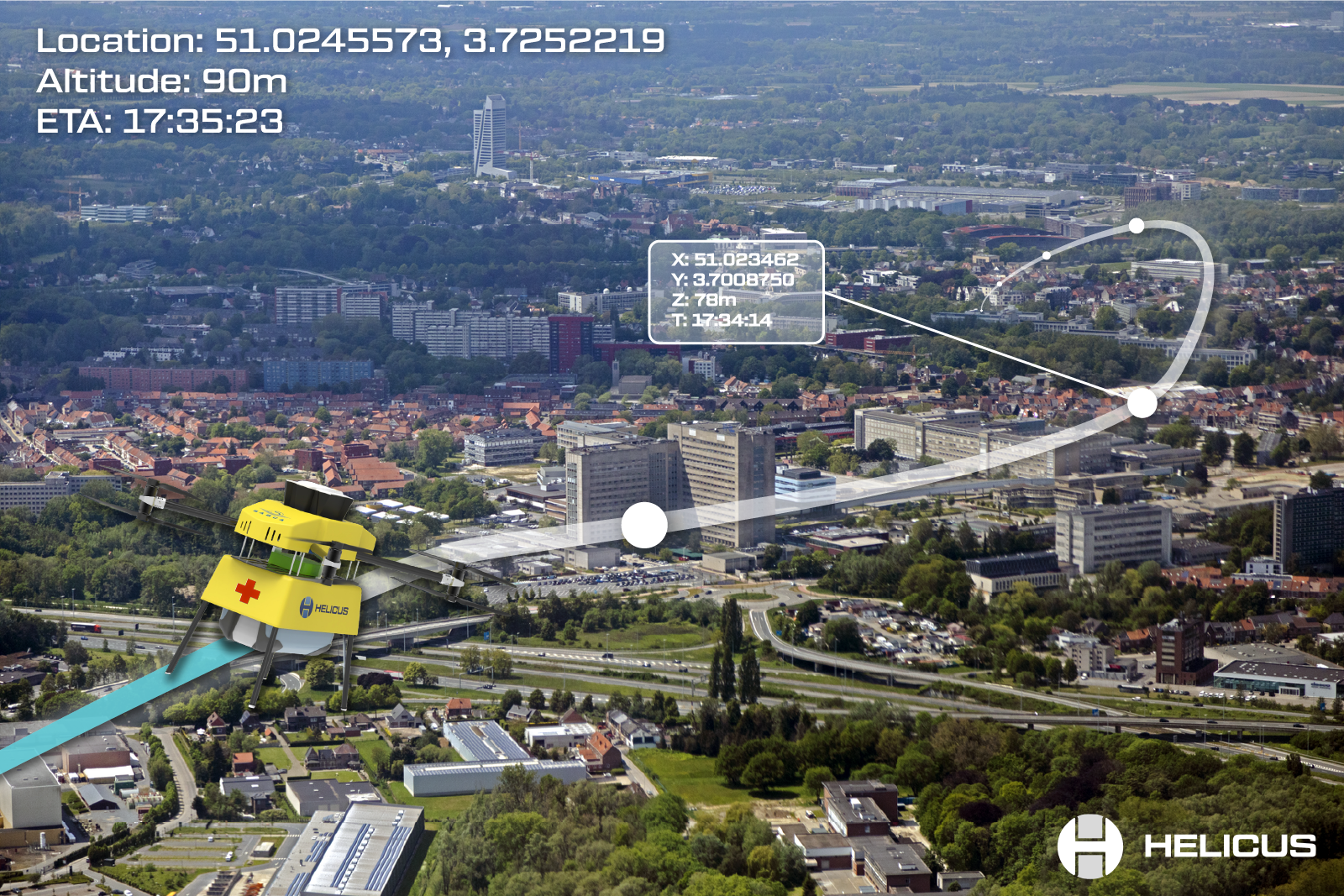skeyes, in its public service role, is keen to serve all airspace users, including future drone operators, in safety, operational and security domains. To achieve this objective, skeyes is involved in several projects and Research & Development activities in partnership with numerous actors (drone manufacturers, drone operators, remote pilots, IT developers, Airports, SESAR Joint Undertaking…). The goals are to prepare the implementation or development of new European regulations as well as to investigate new concepts of operations to be developed, paving the way for the harmonious integration of drones and manned aircraft activities.
Within SAFIR-Med, skeyes is involved in creating a concept of operations for the airspace management of urban environments (Urban Air Mobility). Additionally, skeyes is responsible for performing both the risk analyses and testing all the demonstration flights, as well as for organising the demonstration flights around the city of Antwerp. After the demonstrations in the scope of the SAFIR project in 2019, skeyes uses a number of lessons learned to prepare the next set of demonstrations in this complex airspace.

In the framework of SAFIR-Med, new actors will have to be involved to implement the support to medical operations as well as a communication chain.

The project SAFIR-Med has received recognition and funding from the European Union’s Horizon 2020 research and innovation programme under Grant Agreement No 101017701 under the topic “SESAR-VLD2-03-2020: U-space capabilities and services to enable Urban Air Mobility”.
On 31 March and 1 April 2021, our teams and those of SkeyDrone tested with Brussels Airport the operational deployment of drones at and around the airport. An innovative security drone that can be flown from a great distance flew over the premises to determine how drones can increase the safety and efficiency of airport operations.
For this test, the drone pilot was not on site, but in West Flanders (in Bruges). From there he flew the drone using 5G.
In addition, a drone detection system was tested to identify unwanted drones.
Tests have shown that drones can indeed be very useful in such operations. We want to continue to explore all possibilities with our airport partners, always keeping in mind our primary concern: the safety of all air traffic.
Take a look behind the scenes of the test here.

This project is part of the SAFIR initiative to support medical operations (transporting medical equipment, urgent intervention…) with drones. The full name of this project is Helicus Aero Initiative – Scheduling Connectivity Security (HAI-SCS).
The aim of this project is to test and validate the capacity of the Helicus Command & Control Centre (C2C) to plan and to manage these flight paths in order to prepare future support for medical operations. To do so, Helicus intends to conduct a series of drone BVLOS (Beyond Visual Line Of Sight) flights in the EBAW CTR.
When performing BVLOS, where the drone pilot has no visual control, there is no technology available yet enabling them to comply with the EU regulation requirement to be in a position to avoid any risk of collision with other aircraft. Therefore, BVLOS flights are performed within TSAs specifically made for this purpose. Nevertheless, close coordination with the ATS units is established, preparing the future way of working between drones and ATS units.